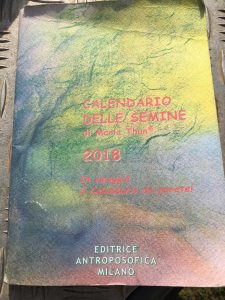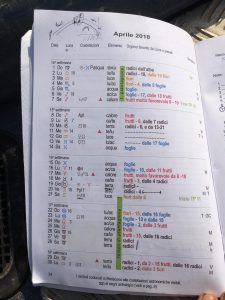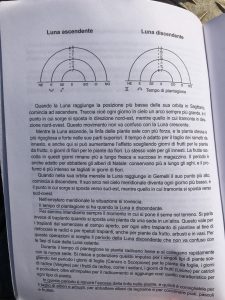Farmers have planted based on the moon cycle for thousands of years, so this aspect of biodynamic farming (along with many other aspects) isn’t unique, but it is heavily emphasized, and the position of the zodiac signs are also considered when doing anything on the farm or in your garden. Along with the burying of animal parts, this is probably where people start raising their eyebrows and thinking this practice get into the witchy and new age spirituality category with healing stones and ayurvedic spas (not that anything is wrong with those practices, do what feels right for you.) Maybe it’s because I’ve lived in Olympia where talking about your sun, moon, and rising sign is a casual conversation, but I don’t think that how biodynamic farmers look to the stars for guidance is that weird.
You can get really into planting by the cosmos, such as when certain planets are in conjunction, but Federico hasn’t really talked much about that, so if you are dying to know about all of the intricacies of the positions of the planets and what that means for your crops I suggests referring to Wolf D. Strol’s Culture and Horticulture: The Classic Guide to Biodynamic and Organic Gardening where there is a whole chapter dedicated to all things celestial. Federico says that the most important thing to consider is where the moon is in the sky in relation to the sun. More than anything you don’t want to plant when the moon is at the top of the north node, it’s better to plant before or after that day. When the moon is rising it’s good to sow seeds and when the moon is descending it’s best to prune trees.
The next thing to consider is what sign the moon is in to know what will be best to plant during that time. If the moon is in an Earth sign (Tarus, Virgo, and Capricorn) it’s best to plant root crops, Air signs (Gemini, Libra, and Aquarius) are best for flowers, Water signs (Cancer, Scorpio, and Pices) are best for leaf crops, and Fire signs (Aries, Leo, and Sagittarius) are best for fruit crops. Federico uses the book Calendario Delle Semine by Maria Thun, which tells you the position of the moon and the sign it is in for each day. This booklet also provides a section to write down what you did that day to refer back to later. You can order Maria Thun’s booklet onlie and it is available in multiple languages including English. I did find a website that gives a less detailed description of the moon calendar online, the graphic design reminds me of the mid-nineties, early two-thousands websites and I love it, here’s the link if you want to check it out.
Paying attention to the moon and the zodiac positions is yet another part of what make biodynamic farming more involved than a lot of other styles of farming. There has been a little bit of research done on the effects of following these planting guides, but it doesn’t seem like there has been enough to make a blanket statement that these methods work. Biodynamic farmers will say that it does, so I think that counts for something. Though, it is very important to mention the right weather conditions will overshadow the lunar position of that day. That is, if it’s been raining relentlessly and you finally have a sunny day to plant, it doesn’t matter if the moon is at its north node, you should definitely plant those babies while you can.



